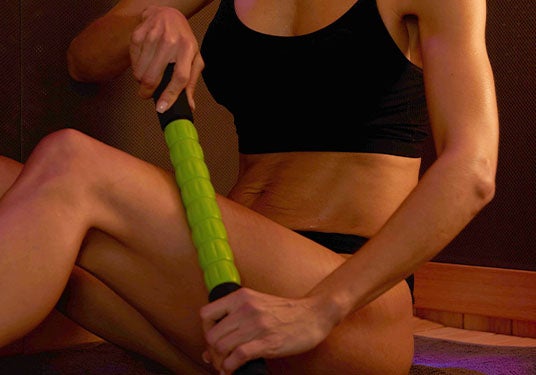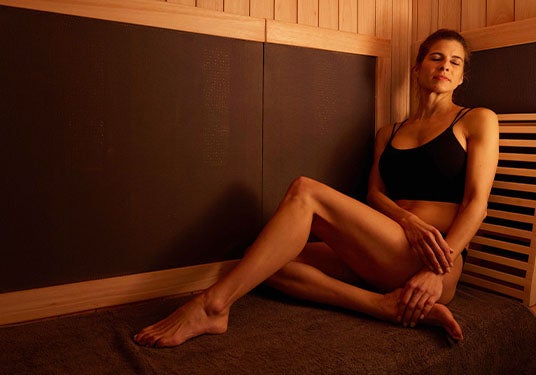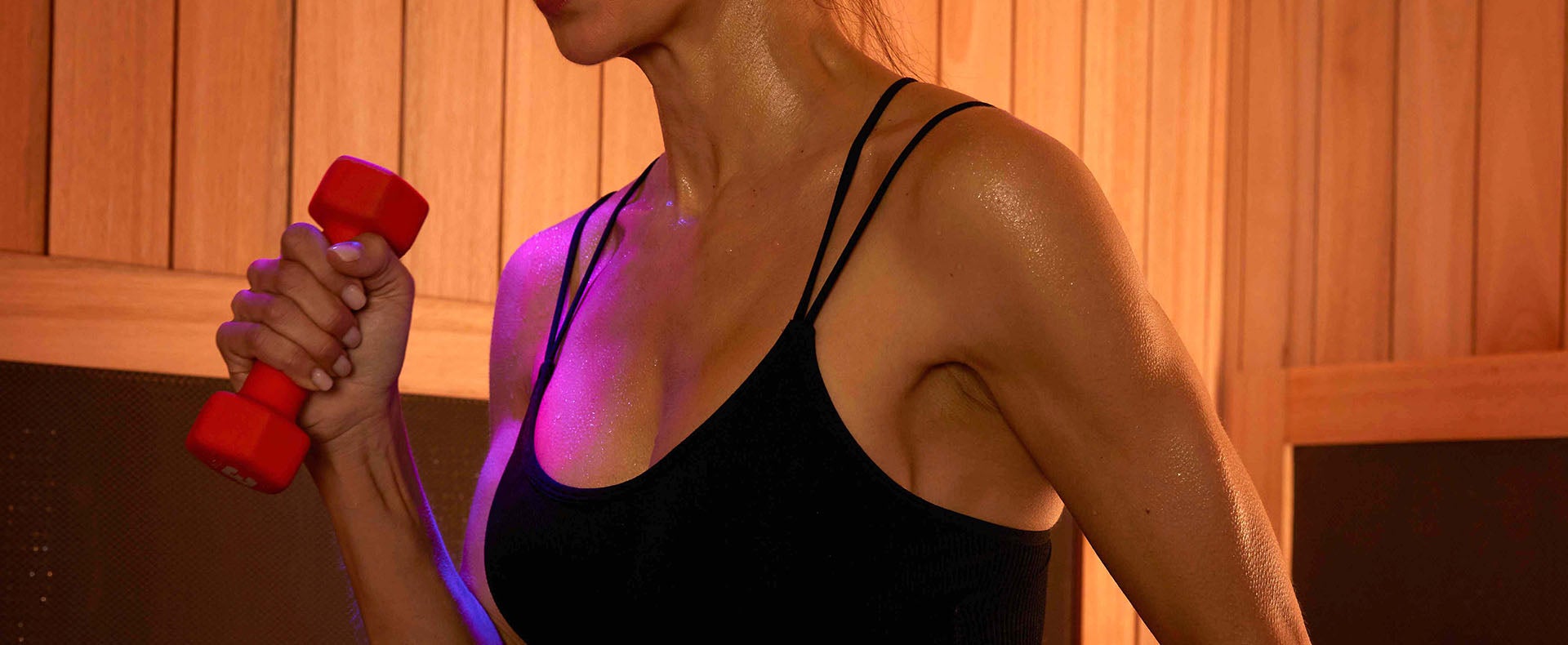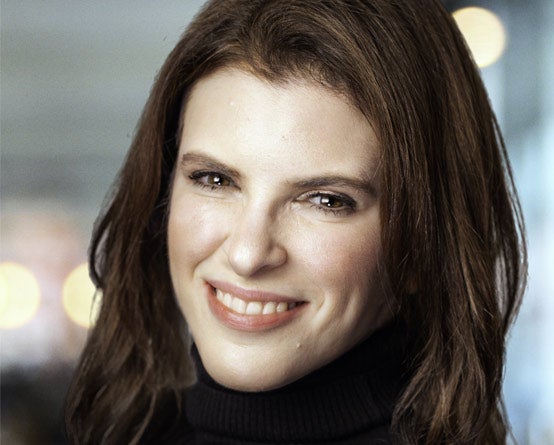You’re disciplined about making time for super-intense workouts but haven’t done the same for post-exercise recovery. Yet, recovery is a crucial part of the exercise adaptation process. During this period, our parasympathetic nervous system takes over, our heart rate decreases, and our blood flows back to our heart. Ironically, it’s while we’re in this “rest and repair” state—not when we’re exercising—that our bodies literally grow muscle and repair tissue. That’s why foregoing recovery could compromise growth and put you at higher risks for exercise burnout, injury, and forced downtime.
While recovery is natural, you can use certain methods to spur it on. Along with amping up growth, these strategies can lessen exercise-induced muscle injury and delayed onset muscle soreness. Unfortunately, since so many methods have been touted in the media (from cryotherapy to compression garments to electromyostimulation, and hyperbaric oxygen therapy), it can be confusing to winnow through the options and pick the ones most worth your time and money. To make designing your recovery regimen no-sweat (pun intended), we’ve stuck to the modalities that are the most time-tested and supported by scientific evidence.
Read on for a round-up of techniques to try the next time you finish a high-intensity workout, heavy weightlifting session, or long endurance bout. Monisha Bhanote, MD, FCAP, ABOIM, integrative medicine lifestyle physician and the author of The Anatomy of Wellbeing, recommends stacking them in this order: drinking, snacking, active recovery, stretching (including foam-rolling), then infrared sauna. Check with your doctor to get the go-ahead, then begin making time for recovery.

You know that you should stay hydrated during your workout. But you should also drink up post-exercise, says Bhanote. If your session was long and taxing (and you sweated a lot), consider a sports drink or coconut water to replenish electrolytes (like sodium chloride, potassium, magnesium and calcium). The NASM recommends drinking eight ounces every 30-60 minutes under temperate conditions and 12 ounces every 30-60 minutes in hot and humid conditions.
Then, within 90 minutes of exercise, choose a snack with protein and carbohydrates, adds Bhanote. While protein helps repair and rebuild muscle tissue, carbohydrates replenish glycogen (glucose stored in your muscles and liver). Consider chocolate milk, a ham or turkey sandwich, or a whole grain roll with hard-boiled eggs.
If you walk on the treadmill for 10 minutes after a grueling strength-training session or go for a leisurely bike ride post-run, you’re practicing what’s known as active recovery. Basically, it’s a period of cool down, with low- to moderate-intensity movements. Worth the extra time, this activity adds to your gym session. Active recovery has been proven to speed up muscle recovery. Specifically, it seems to stimulate blood flow, expedite the removal of lactate and hydrogen from muscles, and signal the proteins that initiate the healing and adaptation processes.

Also known as self-myofascial release, this practice helps release trigger points (also known as knots or adhesions) in the muscles, decreasing pain and tightness. In a nutshell, when you maintain pressure on a trigger point with the foam roller, your muscle fibers stretch, unknot and realign. To try this form of stretching, slowly roll, holding the foam roller on the most tender areas for 30-90 seconds each.
By including stretching, you’ll decrease muscle tension and increase blood flow. Improving blood flow boosts recovery by amping up the rate at which nutrients flow throughout the body. Try five to 10 minutes of static stretches, meaning poses that you hold over time. Think: seated butterfly stretches or forward bends. As a side benefit, many of these stretches (like legs up the wall or child’s pose) help improve sleep quality. While you stretch, integrate breathwork to further your relaxation.

Immerse yourself in a sauna for at least 10 minutes. Most athletes find that using the sauna after exercise improves their recovery time, says Jennifer M. Bontreger, DO, FACP, Principal, Southern Horizon Healthcare, Board Certified Internal and Sports Medicine Physician. “The heat from the sauna enhances the circulation of oxygen- and nutrient-rich blood throughout your body,” she explains. “This, in turn, helps muscles damaged by exercise repair, so you can get back to exercising again.”
As another pro, sauna use can increase flexibility, she adds. “The heat in a sauna can help relax the muscles, making them more pliable and easier to stretch. This increased flexibility can help reduce the risk of injury and improve your overall performance during future workouts.” Sunlighten’s infrared saunas have been third-party tested to increase flexibility1. A study conducted at Auburn University of Montgomery showed a Sunlighten mPulse Smart Sauna can increase your flexibility up to 3x. Benefits of increased range of motion include joint mobility, less friction in the joints, and enabling of joint function to diminish stiffness and joint relaxation.
“Remember to counteract the dehydrating effect of the sauna by drinking plenty of water before, during, and after your session,” recommends Physical Therapy Central. Also, increase the relaxation factor by doing breathing exercises or listening to soothing music while you immerse yourself.
“The most effective recovery strategy that is free at our disposal is sleep,” says the NASM. In fact, restful shuteye is so critical to recovery, it’s usually all that’s needed (along with hydration and nutrition). “Though the effects of sleep and nutrition are not seen immediately, these have a long-term effect for athletes in terms of their performance,” says Rathna Nuti, MD, FAAFP, Board Certified Family Medicine & Sports Medicine. “When you build up a deficit of sleep, the stress hormone, cortisol, can accumulate in your body, impairing recovery,” explains the NASM. Be sure to prioritize sleep even more after intense exercise, according to the Cleveland Clinic.

Both stages of sleep are critical for recovery. During the portion known as non-rapid eye movement (NREM), your muscles and tissues grow and heal, and your energy replenishes. Described by NASM as the “original performance-enhancing ‘drug,’” NREM makes up 85% of sleep. Meanwhile, during rapid eye movement (REM)—15% of sleep—your brain recovers. Without this phase, reaction time, effort, intensity, and motivation will suffer.
Many of our Sunlighten infrared sauna users tell us their sleep improves when they sauna regularly. Retired WNBA champion Jackie Stiles has a great story of dramatic increase in improvement in her sleep score on her Garmin watch after saunaing. You can read more about how her Sunlighten sauna has helped her here. Professor Michael Hamblin, the world’s foremost researcher of infrared explains why infrared therapy may improve the amount and quality of sleep, “The mechanism for this effect has not been firmly established but may be related to the ability of infrared to act as an "exercise mimetic." It is well known that physical exercise will improve disturbed sleep. Infrared radiation can increase blood flow and oxygen metabolism in the muscles and the skin and could trigger a biochemical cascade resulting in improved sleep.
Prioritize recovery as much as exercise to enhance your growth and functioning.



